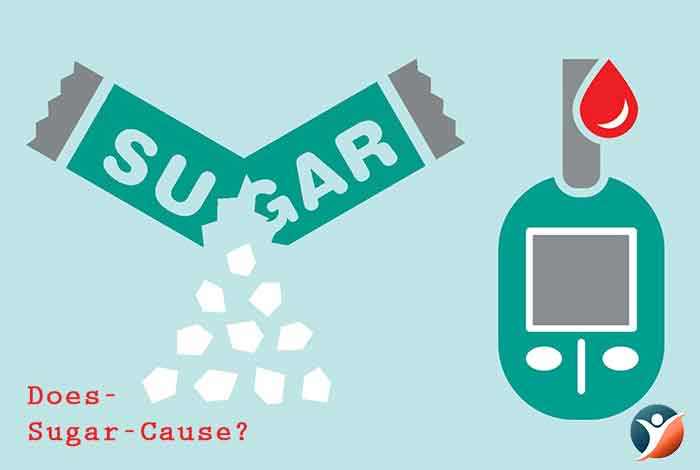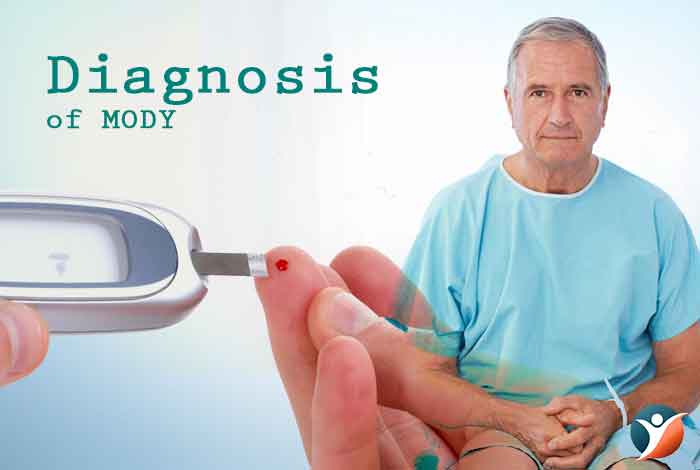
MODY (Maturity Onset Diabetes of the Young) – Types, Symptoms and Treatment

Maturity Onset Diabetes of the Young (MODY) is a rare form of diabetes that has been found to have a strong genetic background and runs in the families. It is caused due to a mutation in a single gene of an autosomal chromosome which is passed on from generation to generation. If a parent has this mutation, there is a 50% chance that his/her offspring will get this gene. If an offspring inherits this gene, there is a probability that he will develop diabetes before reaching the age of 25 years, irrespective of his lifestyle, weight and ethnicity. It is a heterogeneous group of disorders that is MODY is different from both type I and type II diabetes. However, the disease is so rare in its occurrence that it is often misdiagnosed for type I or Type II in the beginning.
Some of the key features of MODY are as follows:
- Developing diabetes before the age of 25 years
- Having a parent with diabetes
- Diabetes found to run in families
- Insulin might or might not be necessary
Gene Mutation Leading to MODY

There are a number of gene mutations that cause MODY, all of which disable the pancreas from synthesizing a hormone known as insulin. In the absence of this hormone, the blood glucose level increases. This happens because insulin helps the cells in taking up glucose from the blood and using it for producing energy. When insulin is not present, there is surplus glucose in the blood which can seriously damage the kidneys, eyes, blood vessels and nerves.
Clinical manifestations of MODY depend on the type of mutation that occurs in the gene. Some people develop a slightly high level of blood glucose that remains constant throughout the life, develop no or mild symptoms of diabetes and have no long-term complications due to the disease. Their elevated blood glucose levels can only be determined during a routine checkup. However, several other mutations require a more specific treatment regimen either with insulin or anti-diabetes medicines.[1]
Interesting Facts About MODY
- People with one of the forms of MODY might have a near normal fasting blood glucose test reading and very high post-meal blood sugars.
- The age of onset of MODY is significantly lower if the gene has been passed down from mother. But if the gene is inherited from the paternal side, the age of development of diabetes increases.
- It is a myth that MODY only affects people who are under the age of 25 years. Anyone in the age group of 10-55 years can develop MODY.
- Women who have MODY get diagnosed at the time of their first pregnancy. These women develop gestational diabetes very quickly.
- People with MODY are generally not insulin resistant
- Some forms of MODY respond well to drugs that stimulate the secretion of insulin
- In one form of MODY, the patient’s fasting blood glucose level is normal but insulin secretion starts failing when the blood glucose level goes beyond 144 mg/dL.
- People with MODY often have subtle or sometimes more pronounced congenital kidney defects which might become obvious before diabetes is diagnosed.[2]
Types of MODY
The most commonly observed types of MODY include.[3]
1. HNF1-alpha (MODY3)
This gene is known to cause nearly 70% of the cases of MODY. It is responsible for causing diabetes by decreasing the amount of insulin synthesized by pancreas. In these people, diabetes generally develops when they are in their adolescence or early twenties. These people generally do not require insulin to treat their condition and can manage their symptoms with the help of anti-diabetics.’ medicines.
2. HNF4-alpha (MODY 1)
This form is not as common as other types of MODY. People who inherit this gene mutation are more likely to have a birth weight of 9lb or more. These babies might develop low blood sugar at the time of birth or soon after the birth which might require an immediate medical help. Some people get better with anti-diabetic medicines and others might require insulin therapy.
3. HNF1-beta (MODY5)
People with this type of MODY can develop a number of problems, including uterine abnormalities, renal cysts, gout and even diabetes. Renal cysts can be detected in the womb itself before the baby is born. Diabetes develops later in life and the person generally requires insulin therapy for managing the disease. Along with it, he is required to follow a healthy diet and indulge in regular physical exercise. People with HNF1-beta are at a higher risk of developing complications due to diabetes.
4. Glucokinase (MODY2)
This gene is involved in making the body identify that the blood glucose levels are elevated. In some cases where this gene does not function properly, the body is unaware of the elevated blood glucose levels and even allows it to stay that way. People who have glucokinase MODY are more likely to have slightly elevated blood glucose level, generally around 5.58-8mmol/L. People with this MODY do not develop any symptoms of diabetes and is generally diagnosed during routine checkup. No treatment is required for glucokinase MODY.
5. Insulin Promoter Factor 1 (MODY4)
Insulin Promoter Factor 1, also known as PDX-1 is a gene that controls the growth and development of beta cells of the pancreas. This gene is also involved in activating the gene coding for insulin.
6. Neurogenic Differentiation 1 (MODY6)
This gene codes for neurogenic differentiation 1, which is a protein that allows production of other proteins associated with other genes. NEUROD1 gene regulates the production of insulin by controlling the insulin gene. When this gene gets damaged, there is a decrease in the production of insulin.
Symptoms of MODY

Symptoms of MODY depends on the type of MODY. Many people with MODY have hyperglycemia for several years before they develop the symptoms of MODY and get diagnosed. Generally, these people get diagnosed accidentally during routine checkup. In the early stages of the disease, there might be no symptoms. However, in the absence of treatment, the blood glucose level continues to increase that eventually causes the following symptoms to develop.[4]
1. Increased Thirst
Increased blood glucose causes the fluids to move out from the cells which cause an increased sense of thirst.
2. Frequent Urination
Rise in blood glucose levels causes the fluids to move out from the cells and makes the person feel thirstier. When the input of fluid increases, the urine output increases. The increased frequency of urination is observed during day and night.
3. Increased Hunger
In diabetes, there is an elevation in the level of glucose in the blood but the cells of body are unable to use insulin. The cells are deprived of energy source and therefore, the patient feels hungrier.
4. Weight Loss
Since the glucose is not utilized efficiently and spills into urine from blood. This leads to a loss of nutrients from the body and weight loss.
5. Blurred Vision
Increased blood glucose level in the blood causes loss of fluid from the lenses of the eyes which affects the ability to focus and see.
6. Other Symptoms
Some of the other symptoms that are seen in MODY patient are dry and itchy skin, drowsiness and fatigue. In other types of MODY like MODY5, other organ apart from pancreas like kidneys get affected. In some of the cases of MODY5, kidney disease might get diagnosed before diabetes.
Diagnosis of MODY

Generally, diagnosis of MODY requires genetic testing. In this, a blood sample is drawn and analyzed for the presence of gene mutation. It usually takes 4-8 weeks for the results to come. In some of the cases, results can be obtained in a shorter period of time. Sometimes, in place of blood sample, a mouth swab can also be taken for genetic testing. Otherwise, in most of the cases, MODY is often diagnosed during a routine screening procedure for checking blood sugar levels.
Treatment of MODY (Maturity onset diabetes of the young)
Treatment for MODY is specific to the type of MODY. Some if the ways in which MODY can be managed are as follows:
1. HNF4A (MODY1)
It is usually treated with anti-diabetic medicine belonging to the class sulfonylureas like glyburide, lipizide and glimperide. Drugs belonging to this class work by stimulating the pancreas to produce more insuiln. Treating MODY 1 with sulfonylureas can delay the initiation of insulin therapy, which will be needed sometime down the line in order to have complete control over the disease.
2. Glucokinase (MODY2)
it is a rather milder form of MODY and often goes untreated with neither the medicines nor insulin, except during pregnancy where it is extremely important to monitor blood glucose levels. MODY2 patients can keep their blood glucose levels in check through diet and exercise.
3. HFN1A (MODY3)
People having MODY3 respond well to the drugs belonging to class sulfonylureas, which can delay the initiation of insulin therapy.
4. IPF1 (MODY4)
The line of treatment for these patients also involves use of drugs belonging to the class sulphonylureas.
5. MODY5 and MODY6
these, as well as other rarer forms of MODY commonly, require insulin treatment within a short period of diagnosis. IN MODY5, people also develop kidney cysts and other such disorders which should also be treated.
Apart from MODY2, all other forms of MODY carry severe risks of developing some or the other complication like nerve damage, heart disease, eye involvement and kidney disease. These complications are also seen with type I and type II diabetes. Therefore, these patients are required to keep their glucose levels in check.
Difference between MODY, Type I and Type II Diabetes
|
MODY |
Type II Diabetes |
Type I Diabetes |
|
|
No. of genes involved |
1 |
Several |
Multiple HLA genes and others |
|
Age when symptoms first appear |
Usually younger than 25 years of age |
Usually older than 40 years of age |
Usually younger than 8-12 months old. |
|
Can it be inherited |
Yes- MODY is passed on to children. One of the key features of MODY is that a parent and a grandparent has diabetes. |
Not completely- only the risk of type I diabetes is passed on to offspring. It also depends on environmental factors as well. |
Not completely- The Risk of Type I diabetes is passed on to children. It also depends on certain environmental factors. |
|
Obese Vs Non-obese |
Non-Obese |
Obese |
Often non-obese |
|
Association with metabolic syndrome |
No |
Yes |
Greater risk of other autoimmune diseases like thyroid disease or Celiac disease |
Who Should Be Tested For MODY?
Following people should get themselves tested for the presence of MODY so that proper treatment can be initiated:
- A diabetic patient who is a part of the family that has 3 or more generations of people affected by diabetes.
- A diabetic patient who has a stable yet mildly elevated blood sugar level that is discovered accidentally during routine checkup.
- A previously diagnosed type I diabetes patient who tests negative for auto-antibodies like GAD65, insulin, ZnT8, IA-2, islet cell or ICA, which is typically done at the time of diagnosis.
- A patient diagnosed with type I diabetes who produces significant amounts of insulin in the body years after the diagnosis is made.
- A patient diagnosed with type II who has a normal weight or is not significantly obese and has no signs of insulin resistance.
- Diabetes that is coupled with pancreatic insufficiency
- Individual or family history of developing diabetes along with kidney disease or abnormality.
Lifestyle Changes for MODY Patients
Lifestyle changes are an important aspect that can help in managing MODY. Some of the lifestyle modifications that are recommended for keeping blood glucose levels in check include:
1. Maintain healthy body weight
MODY Patients should aim to keep their BMI in a healthy range of 18.5-24.9. If the patient is overweight or obese, he should try to get rid of the extra pounds.
2. Healthy Diet
Healthy diet is extremely important for keeping blood glucose levels in check. Patients should include the following food item in their diet:
- Whole grain food
- Fruits
- Vegetables
- Whole grains
The following foods should be avoided;
- Processed food
- Foods with simple sugars
- Fatty food
- Sweets
- Salt
- Alcohol
Patients should watch their portion size and calorie intake as it impairs blood glucose control and causes an increase in the body weight. Even excessive intake of proteins should be avoided.
3. Remain Physically Active

Moderate physical activity for 30m minutes on a regular basis is more than enough to keep blood glucose levels in check and promote a healthy wellbeing.




